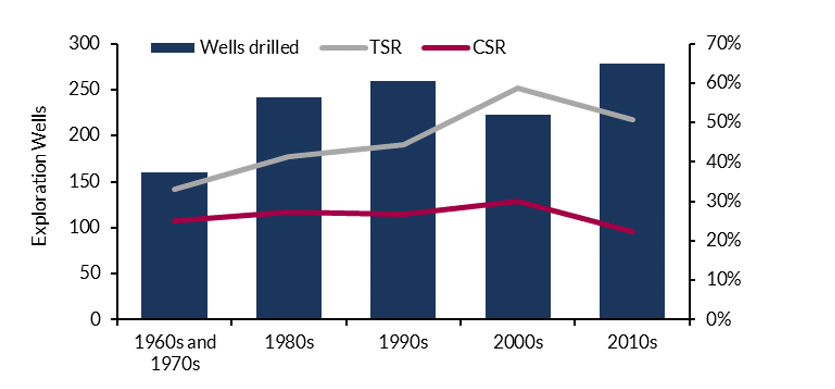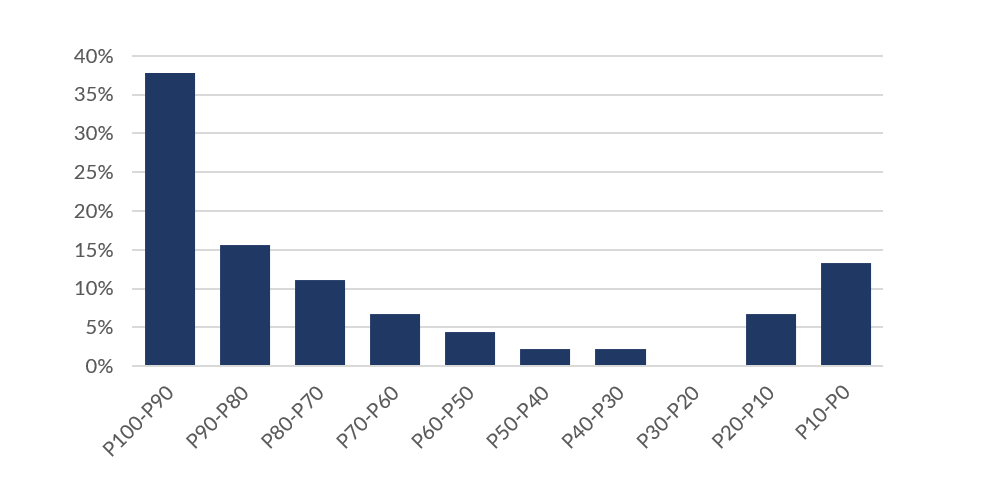In 2018 Westwood was commissioned by the Norwegian Petroleum Directorate (NPD) to review advances in exploration technology and geoscience since 1990 and the impact on exploration on the Norwegian Continental Shelf (NCS). The report reviewed 11 technology themes including Risk and Uncertainty Analysis and Ways of Working as well as Quantitative Seismic Analysis and Electromagnetic techniques.
The study showed how advances in technology and geoscience since 1990 allowed the industry to increase overall discovery rates, however the increasing maturity of the plays being explored meant that discovery sizes have decreased, and commercial success rates have declined. That is, the industry got better at finding small accumulations.
In the 1990’s 50% of discoveries were less than 30mboe. By the 2010’s 50% were less than 19mmboe. Over the same period, technical success rates increased from 44% to 51% and commercial success rates decreased from 27% to 22%. Whilst 61% of discoveries made in the 1990s were considered commercial, only 43% of more recent discoveries are likely to be developed. The availability of high quality broadband 3D seismic data offers new insights into the subsurface, allowing ever more subtle prospects to be identified. Unfortunately, many of these pools have been too small to be developed when drilled.
 Source: Westwood – Wells drilled, technical and commercial success rates
Source: Westwood – Wells drilled, technical and commercial success rates
The trend of overestimation of success case volumes appears to continue.
It has been long been recognised that, even when successful, explorers tend to find smaller accumulations than expected pre-drill. Westwood estimates that more than 76% of discoveries were smaller than 50% probability of exceedance and 50% were smaller than the 80% probability of exceedance.
There are opportunities to correct this with better pre-drill prospect evaluation including calibration against relevant analogues.
 Source: Westwood – Post-drill volume estimates versus pre-drill predictions
Source: Westwood – Post-drill volume estimates versus pre-drill predictions
There is no technology “Silver Bullet”. Integration across all the subsurface disciplines is key
The industry has been looking for technologies that can decrease cycle time and increase success rates in order to increase efficiency. Controlled Source Electro-Magnetics (CSEM) is a technology that offers significant potential, but too few successes and failures have been shared publicly to yet judge its impact in finding commercial hydrocarbons. Seismic Direct Hydrocarbon Indicators are well established and understood, yet there are suggestions that some of the knowledge and experience that was gained during the 1990’s is not being used as effectively as it could be. What is clear is that there is no technology ‘silver bullet’ and successful exploration will continue to rely on detailed integrated analysis of the all data available from all of the geoscience disciplines, to produce a holistic understanding of the opportunity.
Graeme Bagley
[email protected]
This is an extract from a recently published report on Westwood’s Wildcat service: “Advances in Exploration Technology and Geosciences – Past and Future on the NCS”. To arrange a demonstration of the Wildcat service or to obtain a copy of the report, please visit Westwood Global Energy Group at https://www.westwoodenergy.com/research/wildcat or contact:
Ili Afifuddin
[email protected] or +44 (0) 20 3794 5375




